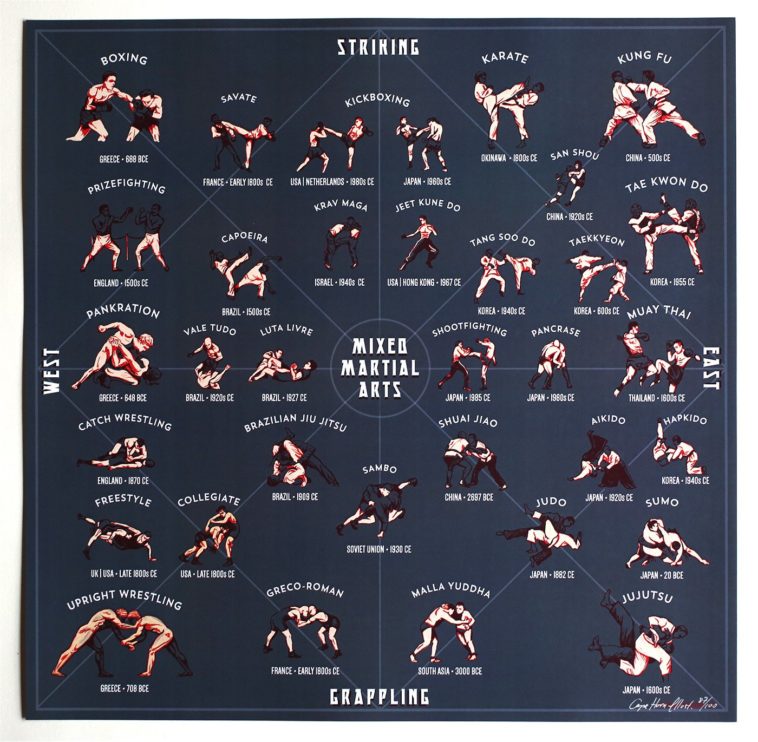Discover The Keys Of Taekwondo's Belt Degrees! From White To Black, This Overview Has Every Little Thing You Require To Understand. Dive In Currently!
Discover The Keys Of Taekwondo's Belt Degrees! From White To Black, This Overview Has Every Little Thing You Require To Understand. Dive In Currently!
Blog Article
Composed By-Urquhart Gonzalez
Did you recognize that there are an overall of 10 belt levels in Taekwondo? From the novice's white belt to the distinguished black belt, each level represents a milestone in your journey to proficiency.
But what do these belt levels really mean? How do you progress with them?
In this conversation, we will break down the belt levels in Taekwondo, discover their significance, and reveal what it requires to rise with the rankings.
So, if you're curious to understand the details of Taekwondo's belt system and what it means for your training, stay tuned.
The Objective of Belt Levels
The function of belt levels in Taekwondo is to give a clear and structured progression system for you to track your advancement and ability level. As you start your Taekwondo trip, you start with a white belt, signifying your beginner status. With each belt promo, you obtain new understanding, strategies, and obligations.
The belt degrees act as turning points, reflecting your devotion, dedication, and growth in the fighting style. https://patch.com/new-york/newrochelle/capoeira-martial-arts-kids-comes-new-rochelle-public-library provide a sense of success and inspiration to keep pushing yourself to enhance. Furthermore, belt levels aid teachers and peers assess your abilities and provide suitable assistance and training.
Belt Colors and Their Significances
As you advance with the belt degrees in Taekwondo, each color stands for a details meaning and represents your growth in the fighting style.
The white belt, which is the beginning point for all beginners, represents purity and virtue.
As you proceed to the yellow belt, it indicates the earth where a plant sprouts and settles.
what martial art should i do stands for development and the advancement of your abilities.
The blue belt represents the skies, where your possibility as a Taekwondo professional is limitless.
The red belt represents threat and care, reminding you to use your abilities sensibly.
Lastly, the black belt stands for mastery and expertise, representing your trip in the direction of becoming a true Taekwondo master.
Each belt color holds its own one-of-a-kind meaning, mirroring your progress and devotion in this old martial art.
Advancing Through the Belt Degrees
To advance with the belt degrees in Taekwondo, you have to continually show your skills and devotion. Here's what you need to find out about advancing in this martial art:
1. ** Technique Makes Perfect **: Regular training sessions are important to boost your technique and master the required kinds. Rep refines your abilities, permitting you to perform with precision and rate.
2. ** Pushing Your Restrictions **: Advancing with the belt degrees needs pushing on your own beyond your convenience zone. You'll be challenged physically and psychologically, but it's through these difficulties that you expand and enhance.
3. ** Checking Your Knowledge **: Belt examines assess your understanding of Taekwondo concepts, consisting of sparring, self-defense, and damaging techniques. These examinations ensure you have an extensive understanding of the art and prepare to proceed to the following degree.
Conclusion
As you start your journey through the belt degrees in Taekwondo, remember that each color holds a deeper meaning beyond its surface area look.
Just like the vibrant hues of the belts, your progress stands for growth, discipline, and willpower.
As https://classes-for-kids-near-me42197.blog2news.com/34475770/self-defense-and-mental-health-and-wellness-building-durability-with-training advance, each belt comes to be a sign of your dedication and proficiency of the art.
Welcome the obstacle, press your restrictions, and allow the meaning of your belt degrees motivate you to become the best version of yourself both on and off the mat.
